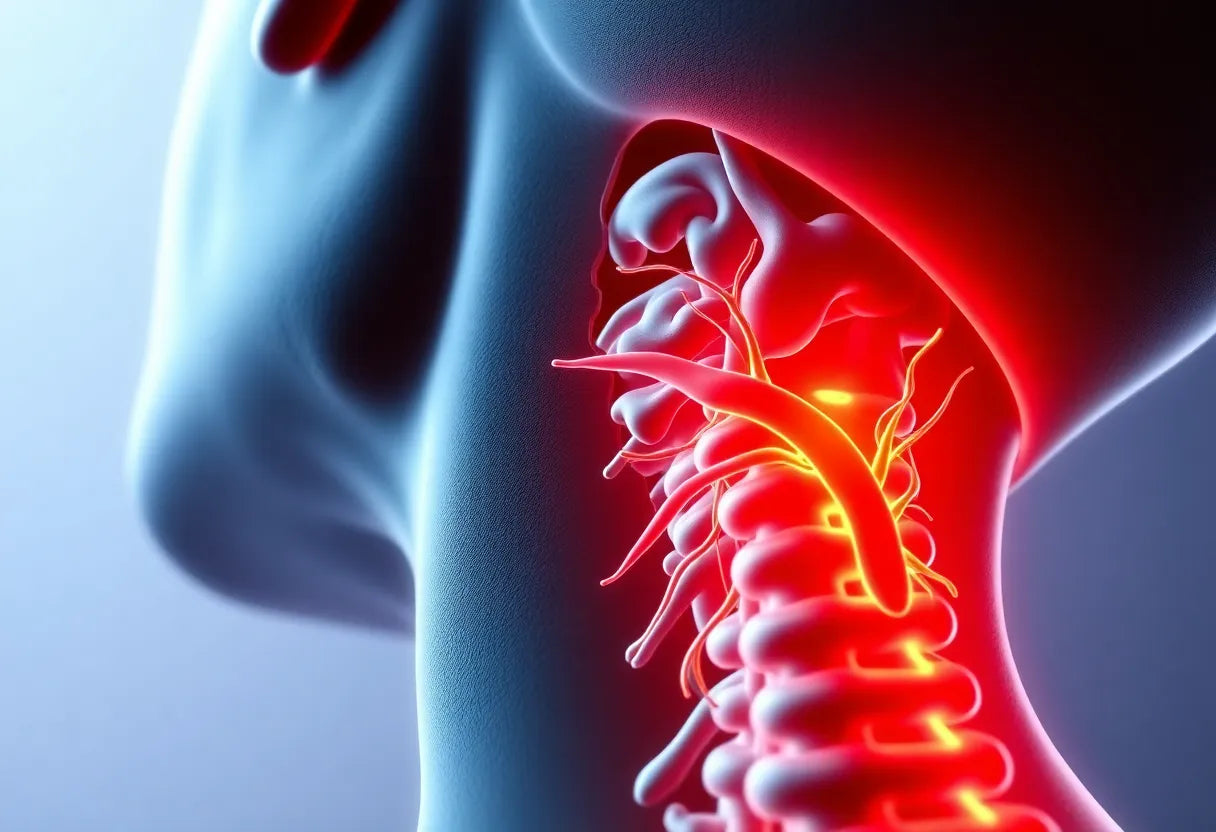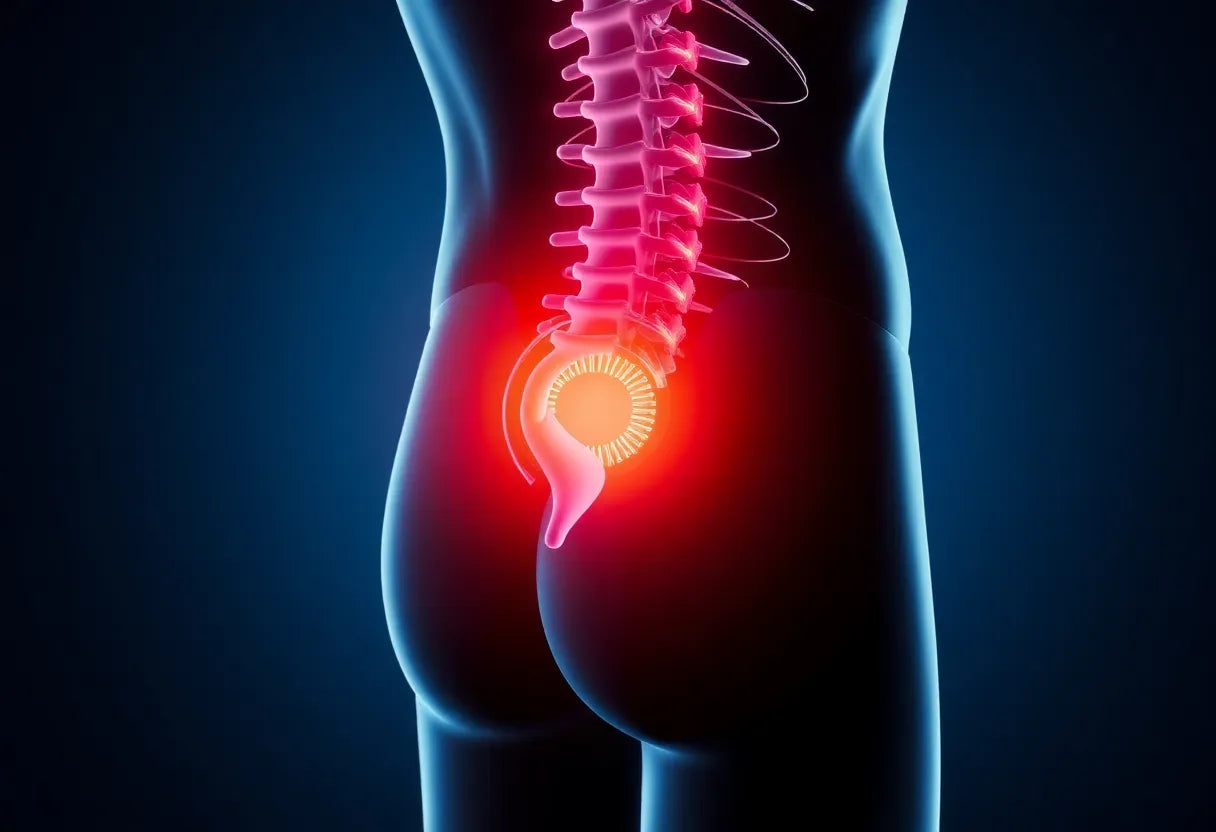Back pain is a common ailment that affects millions of people worldwide, disrupting daily activities and diminishing quality of life. From minor discomfort to debilitating pain, it can hinder movement, productivity, and overall well-being. The prevalence of back pain is a testament to the need for effective management strategies that address both symptoms and underlying causes.
Understanding back pain and its challenges
Back pain is not only widespread but also multifaceted, often stemming from a variety of causes such as poor posture, muscle strain, or underlying medical conditions. Its impact can be far-reaching, influencing everything from physical activities to mental health. The challenges posed by back pain are significant, as it often necessitates lifestyle adjustments and can lead to chronic issues if not properly addressed.

Men's Posture Shirt™ - Black
Supports better posture, alleviates tension, and activates back muscles with patented technology.
The importance of exercise in alleviating back pain
Exercise emerges as a powerful tool in the fight against back pain. It is a proven remedy that not only alleviates discomfort but also enhances functionality and overall health. Regular physical activity strengthens the muscles that support the spine, improves flexibility, and promotes better posture. By incorporating targeted exercises into your routine, you can significantly reduce the frequency and intensity of back pain episodes.
Purpose of this guide
This guide aims to equip you with essential exercises designed to manage and relieve back pain effectively. By following the exercises outlined, you can unlock relief and regain control over your daily life. Whether you're dealing with chronic pain or occasional discomfort, these exercises are crafted to suit various needs and fitness levels, providing a comprehensive approach to back pain management.
In the following sections, we will explore a range of exercises supported by scientific evidence, offering detailed instructions to ensure you perform them safely and effectively. Our goal is to empower you with the knowledge and tools to take proactive steps towards a pain-free life, enhancing your physical health and overall well-being.
evidence-based benefits of exercise for back pain
Scientific research consistently supports the efficacy of exercise therapy in managing chronic low back pain. Systematic reviews and meta-analyses have demonstrated that engaging in structured exercise programs significantly reduces pain and enhances function in individuals suffering from chronic low back pain. The benefits, although sometimes modest, are well-documented and provide a strong foundation for incorporating exercise into pain management strategies.
Among the most effective exercises, Pilates, yoga, tai chi, and core-based workouts stand out. These forms of exercise not only address pain and disability but also contribute to overall physical and mental well-being. Pilates, for instance, focuses on core strength and flexibility, which are crucial for spinal support and reducing back strain. Similarly, yoga and tai chi offer mind-body benefits, enhancing flexibility and reducing stress, which can exacerbate pain.
essential back pain exercises
pelvic tilts
Pelvic tilts are a foundational exercise aimed at strengthening the lower abdominal and back muscles. To perform this exercise, lie on your back with your knees bent and feet flat on the floor. Tighten your stomach muscles, flattening your back against the floor. Hold this position for a few seconds before releasing. Repeat this sequence 10-15 times to build strength and stability in the lower back.
bridges
Bridges are excellent for targeting the glutes and lower back, providing improved support for the spine. Start by lying on your back with knees bent and feet hip-width apart. Lift your hips towards the ceiling, creating a straight line from shoulders to knees. Hold this position for a few seconds before lowering your hips back to the floor. Aim for 10-15 repetitions to enhance muscle support.
bird-dog
The bird-dog exercise is designed to improve core stability and balance. Begin on your hands and knees, extending one arm forward and the opposite leg back while maintaining balance. Hold this position for a few seconds, then switch sides. Repeat 10 times on each side to develop coordination and core strength.
cat-cow stretch
The cat-cow stretch is a dynamic movement that increases spine flexibility and mobility. On your hands and knees, alternate between arching your back (cat) and dipping your back (cow). Move slowly and smoothly, repeating the sequence 10 times to enhance spinal flexibility.
child’s pose
Child’s pose is a gentle stretch for the lower back and hips. Kneel on the floor, sit back on your heels, and stretch your arms forward, lowering your forehead to the ground. Hold this pose for 20-30 seconds to release tension in the lower back.
knee-to-chest stretch
The knee-to-chest stretch is effective for relieving lower back tension and stretching the glutes. Lie on your back and pull one knee towards your chest, holding the position for 20-30 seconds. Switch legs and repeat to improve flexibility and reduce tension.
partial crunches
Partial crunches strengthen the abdominal muscles without straining the back. Lie on your back with knees bent and feet flat. Cross your arms over your chest and lift your shoulders slightly off the floor. Hold briefly, then lower. Perform 10-15 repetitions to build core strength.
best practices for exercise frequency and duration
For optimal results, it is recommended to engage in these exercises three times per week, with each session lasting between 15 and 30 minutes. Consistency is key, and a minimum commitment of 12-16 weeks is advised to achieve meaningful improvements in back pain management. By adhering to this routine, individuals can experience significant reductions in pain and enhancements in daily function.
additional considerations for back pain exercises
Incorporating back pain exercises into your routine offers numerous advantages beyond immediate pain relief. These exercises are pivotal in enhancing core strength and flexibility, both of which are essential for supporting the spine and minimizing strain during daily activities. A strong core acts as a stabilizer for the entire body, reducing the risk of injury and alleviating pressure on the back.

Lumbar support belt
Adjustable belt offers lower back support and relief, ideal for pain or discomfort during daily life.
Moreover, engaging in regular physical activity can have profound psychological and neurobiological benefits. Exercise is known to reduce anxiety and improve overall mood, which can be particularly beneficial for individuals dealing with chronic pain. The release of endorphins during exercise acts as a natural painkiller, while the routine of regular activity can boost confidence and self-efficacy. Additionally, exercises that promote movement efficiency and flexibility can positively affect how pain is processed in the brain, potentially leading to long-term improvements in pain perception.
frequently asked questions
Can I do these exercises if I'm experiencing severe pain?
It is recommended to consult with a healthcare professional before starting any exercise routine if you're experiencing severe pain. They can provide personalized advice and ensure that the exercises are safe for your specific condition.
How soon can I expect to see results?
While some individuals may notice improvements within a few weeks, significant changes are often observed after consistent practice over 12-16 weeks. Consistency and proper form are key to achieving the best outcomes.
Are these exercises suitable for all ages?
Yes, these exercises are generally safe for most age groups. However, modifications may be needed based on individual capabilities and limitations. It's always best to start slowly and listen to your body.
What should I do if the exercises cause discomfort?
If any exercise causes pain, stop immediately and consult a healthcare professional for guidance. They can help determine if modifications are needed or if alternative exercises would be more appropriate.
How can I incorporate these exercises into a busy schedule?
Consider shorter, more frequent sessions, such as 15 minutes a day, to fit into your daily routine. Consistency is more important than duration, so find a schedule that works for you and stick to it.
Do I need any special equipment?
These exercises require no special equipment, making them accessible for home practice. A comfortable mat can enhance comfort, but it's not necessary to perform the exercises effectively.
By following this comprehensive guide, readers can embark on a journey to alleviate back pain through targeted exercises, supported by scientific evidence and practical advice. Remember, the key to success is consistency and listening to your body to ensure a safe and effective exercise routine.
Källor
- American Academy of Orthopaedic Surgeons. (2017). "Rehabilitation for the Spine."
- Mayo Clinic Health System. (2021). "Low Back Pain Exercises."
- Mayo Clinic. "Back Pain."
- American Academy of Orthopaedic Surgeons. "Spine Conditioning Program."
- Department of Veterans Affairs. (2022). "Managing Low Back Pain."
- National Center for Biotechnology Information. "Exercise Therapy for Chronic Low Back Pain."
- Hospital for Special Surgery. "Exercises for Lower Back Pain."
- University of California, Berkeley. "Low Back Pain Exercises."
- Journal of Orthopaedic & Sports Physical Therapy. (2021). "Exercise for Low Back Pain."























